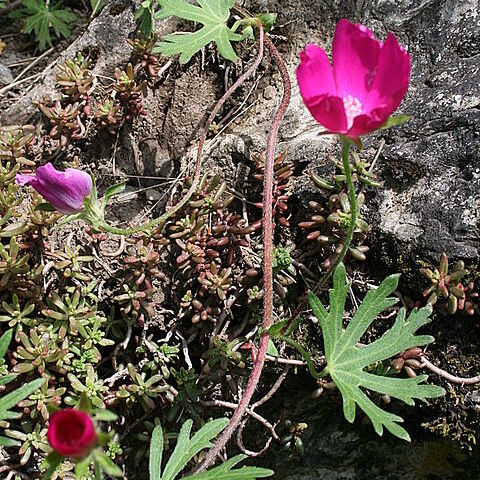Herbs, annual, perennial, or sometimes biennial, hairy, hairs stellate, 4-rayed, and/or simple, or plants glabrous and glaucous. Stems erect, ascending, or decumbent. Leaves: stipules persistent, caducous, or tardily deciduous, ovate, linear-lanceolate to subulate, auriculate, or rhombic-ovate; blade often pedate, suborbiculate, cordate, ovate, triangular, or hastate, palmately cleft or entire and crenate, base truncate, cordate, or sagittate to hastate, margins 1 per carpel; styles 10–28-branched; stigmas introrsely decurrent, filiform. Fruits schizocarps, erect, not inflated, oblate or depressed-discoid, indurate, reticulate and rugose, strigose or glabrous, indehiscent or dehiscent (annual species only); mericarps 10–28, 2-celled, prominently obtusely beaked or not, drying tan or brown, distal locule sterile, lower 1-seeded. Seeds 1 per locule, reniform or reniform-pyriform (annual species only), glabrous. x = 14, 15.
More
Bractlets of the epicalyx 3 or none; each cal-segment with 3 strong nerves; stamen-column often bearing anthers along the sides as well as at the top; pet broadly truncate; carpels 10–20, rounded or short-beaked at the tip, one seeded, sometimes eventually dehiscent at the tip; styles slender, elongate, stigmatic along the inner side; perennial herbs from a thick (often turnip-like) or fusiform root (our spp.), or annual from a slender taproot; lvs triangular to rotund in outline, crenate to deeply divided; fls large, purple, red-purple, or occasionally pink or white. 9, N. Amer.

